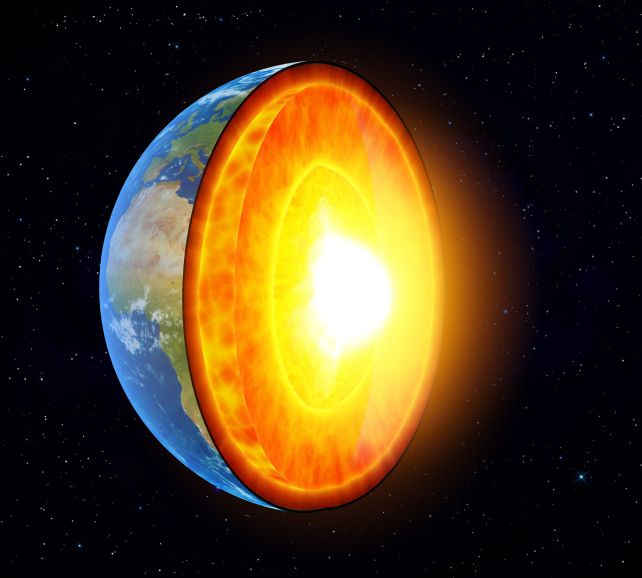Earth’s day-night cycle is precisely defined, with each one spanning a 24-hour period before the next begins. This is the criterion by which we live our lives, strictly respecting the ticking of the clock.
Earth, however, is not precise. Our planet is a big, wobbly gooey ball spinning around the Sun at a dizzying speed of 107,000 kilometers (67,000 miles) per hour, around a large satellite exerting its own gravitational pull. The rotation of the planet therefore does not strictly respect the 24-hour time limit.
Most fluctuations in day length on Earth have known causes. But on the scale of decades, even millennia, scientists have noticed a tiny fluctuation in the length of the day, a little more difficult to pin down.
Now a team of geophysicists from ETH Zürich in Switzerland believe they have found the answer in Earth’s molten iron core, with tiny alterations affecting the planet’s rotation.

There are several different fluctuations that contribute to variations in Earth day length. One is about 1.72 milliseconds per centurycaused by the Moon and the slow rebound of the earth’s crust where ancient ice once weighed it down. Changing water volumes can also affect the rotation of the Earth as the mass moves beneath its surface, as can freeze volumes.
On ten-year scales, a fluctuation of 2 to 3 milliseconds was linked to large-scale flows The fluid core of the Earth.
But there is another fluctuation of approximately 3 to 4 milliseconds every thousand years, and its cause is unclear.
The timing of the fluctuation is consistent with movement at the core-mantle boundary, but a previous 2006 effort to link the model to observational data was not entirely successful.
As the ETH Zürich researchers point out, theoretical modeling techniques and observational data collection have since improved considerably. So they decided to try their luck again.
This is no small feat. In order to accurately identify the correct fluctuation, the team had to subtract all other known fluctuations. This involved carefully modeling changes in the volume of ice and water and determining how they change the Earth’s rotation. The effects of lunar attraction and the Earth’s elastic crust must also be taken into account. What remains can then be carefully studied for signs of the core’s influence.
The researchers used a neural network, as well as measurements of the Earth’s magnetic field obtained from rocks and modern magnetic field measurements.

They also used a previous article which provided a complete history of the Earth’s rotation based on eclipse data and lunar occultations – in which the Moon obscures a planet or star – since 720 BCE.
Their results suggest that the influence of changes in Earth’s ice and water mass was much smaller than previously thought. Furthermore, the fluctuations on millennial timescales were consistent with a simplified model of the magnetohydrodynamics of Earth’s outer fluid core.
That doesn’t mean we can close the chapter on this little mystery. Measuring something so subtle and identifying its root cause is not easy, and there is certainly a margin for error. The team’s results show that we need to look at our planet more closely if we want to understand all the little influences that move it in its rotation. And we will need a larger data set.
“Our results show the importance of internal geodynamics on fluctuations in day length over long periods, particularly due to the movement of fluids in the Earth’s outer core,” they write in their diary.
“However, with remaining gaps – notably the lack of a comprehensive physical model that takes into account various components of core dynamics – there is sufficient motivation to improve currently available models of the Earth’s core.”
The research was published in Geophysical research letters.


